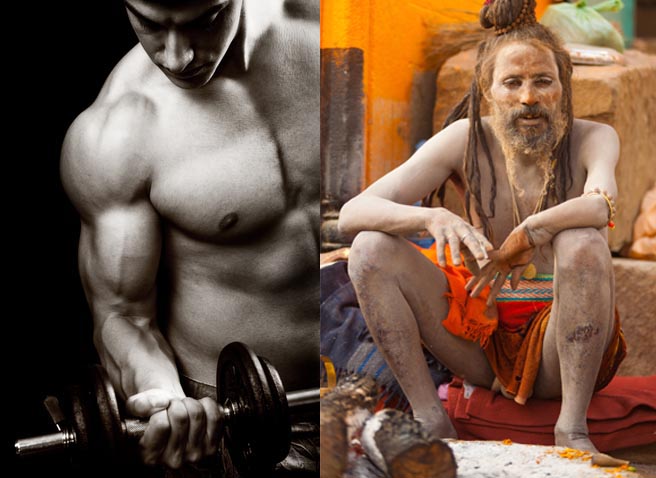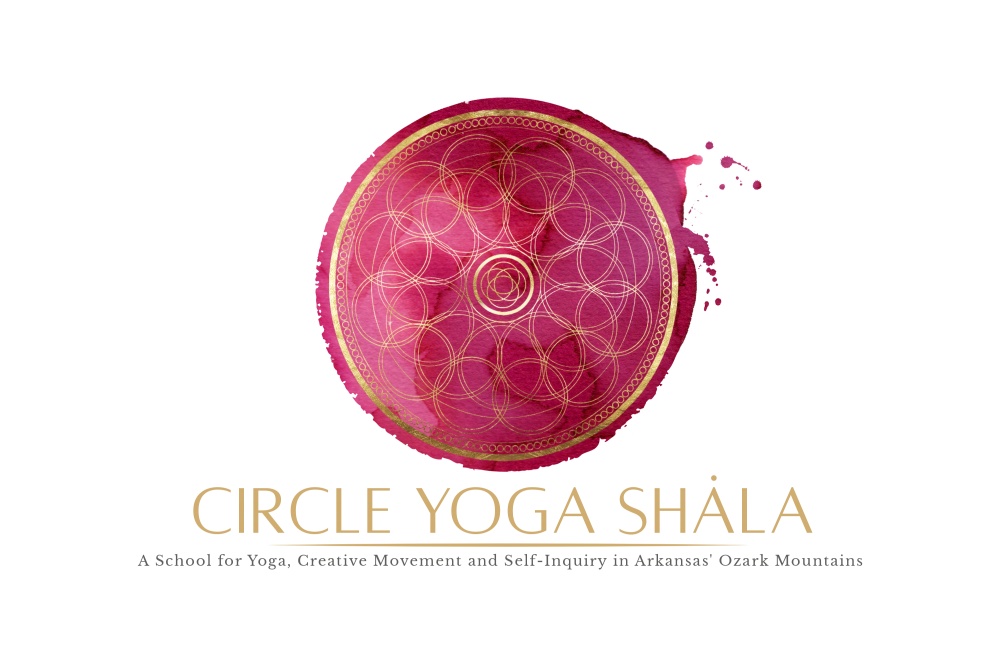
Matt and I have been engaging in some very lively conversations up here on the mountain. Those discussions have primarily revolved around two books. Thanks to the unrelenting snow storms there has been lots of time to read! I decided that a creative way to include you in the conversation would be to interview Matt. (1st posting in a series)
Q: You just read N.E. Sjoman’s book, The Yoga Traditon and tbe Mysore Palace, and Mark Singleton’s Yoga Body: the History of Modern Posture Practice. Why do you think these books are important to today’s practitioners of Yoga?
A: Each book is an attempt to trace the set of conditions that gave rise to Asana’s – – or the practice of posture – – becoming the central focus of “Yoga” in the West. It’s interesting that the traditional texts of Hatha Yoga (like the Hatha Yoga Pradipika) do not describe elaborate sequences of postures, linked together in very specific rhythms of movement and stillness; nor are there any standing postures to speak of in the Shiva Samhita. The original texts on Hatha are rather oriented strongly toward the practice of single postures for long periods of time, and are steeped in pranayama, bandha, and the akarmas or kriyas much more than today’s styles. So, why the modern equation of Asana as Yoga, and why these forms that we have?
Because we are practicing a hybridized art form, there is actually no definitive answer to these questions, but one thing is clear: most of us who have been practicing for a long time have been told various stories and legends about the origins of what we do, often in an attempt to ground our style of practice in the reaches of antiquity, and thus confer onto it a degree of mystique and authenticity. This orientation derives from the human tendency to value things because they are representative of an ancient lineage. Patthabi Jois for instance asserted that the sun salutation could be found in the Rig Veda, perhaps the oldest written text we know of. But there is simply no reason to see this as anything other than a creative act of interpretation on his part. The postural sequence we know as the sun salutation was in fact conceived by the Raja of Aundht, Pratinidhi Pant – – himself an avid body builder. Pant solidified this form and popularized it for the public. So it was a body builder who came up with the sequence for the purpose of advancing bodybuilding technology. Notably, according to Singleton, suryanamaskar and other techniques like it “. . . were not recognized as yoga” at the turn of the nineteenth century. (location 2472 kindle).
Now, there is indeed an ancient and abiding lineal continuity to what we do, but it is not expressed in the forms of practice we have today, unless of course they are done in a particular way. This lineal continuity is a metaphysical orientation toward the primacy of Samadhi, or revelation, or the experience of Grace as the sine qua non of new learning and transformation. So in addition to expressing an authentic concern for lineage, modern practice embodies a dynamic impulse that unfolds as experimentation, innovation, and revolution with regard to the body’s place in personal, cultural, and spiritual development. Knowing what that ancient thread is, along with the fact that experimentation has guided the outer technological development of the forms that we engage, explicitly frees us to address both aspects of the system and take part in its evolution in a more intimate way.
We have to remember that we will leave a legacy called “Yoga” to the world. It is not wise to meet the spirit of our day in either a reactionary way, mechanically lamenting the rapid changes that we see happening, or in a flippant way, by throwing caution to the wind and losing our connection to the ancient part of what we have inherited. In either case, the relationship between action and absorption, or deep meditative states, is likely to be forgotten. If that happens, we know neither what to practice given our situation, nor how to go about doing that upon which we eventually decide.
Q: What role did Krishnamacharya play in this evolution?
A: Singleton’s book is the most exhaustive and well-documented account of the myriad streams that likely influenced the way we practice today. These range from India’s resistance to the British occupation and the revival of physical fitness culture that gave expression to part of that resistance, to the influence of Indian wrestling, body building, British gymnastics, and even a kind of morbid fascination with mendicant Yogis performing for money on the street as contortionists. But more specifically, each book gives fascinating accounts of T. Krishnamacharya’s work at the Mysore palace. Krishnamacharya influenced the world of practice via several prominent teachers that he trained in the early 1900’s, mainly Indra Devi, Patthabi Jois, and B.K.S Iyengar. Those teachers went on to influence most of what is known as Yoga today, and posture practice was central to what they taught.
Krishnamacharya’s work at the Jaganmohan Palace of Mysore seems to have been a period of experimentation, a time when he was expanding the forms of posture practice, the way they were sequenced, and linking the implementation of that technology to traditional yogic ideas in texts like the Bhagavad Gita and the Yoga Sutra of Patanjali.
It is evident that the Acharya was influenced by the physical-culture-zeitgeist that had been developing in Europe during the century that preceded his employment at the palace. This movement subsequently found its way to British occupied India in the late nineteenth century. As Singleton writes: “Several types of Western gymnastics and body culture radically impacted Indian physical consciousness during this period (Ling [gymnastics], Sandow [bodybuilding], YMCA) leading to the creation or revival of “indigenous’ exercise forms distinct (though often borrowing) from these imported systems.” (location 1663 kindle)
The Maharaja of Mysore was an early advocate of the YMCA and its mixture of physical fitness education and spirituality. The palace was outfitted with gymnasia-type equipment and exercise rooms by the time Krishnamacharya took the position as resident yoga teacher. His classes are identified in palace records as “physical culture”, or “exercise” classes, and there was a vyayamasala – – a gymnasium – – just a stone’s throw away, whose very popular bodybuilding classes happened at the same time as his.
The Maharaj was also the benefactor of a national fitness celebrity named K.V. Iyer. Iyer had openly combined the best of Western physical culture and “the Indian Specialty” (Hatha Yoga) into his own progressive complex of techniques for human development. The explicit goal of the system was to bring forth the “ideal man”, one with the “symmetry and strength of a Sandow” [a famous body builder of the time], and the “immunity to disease afforded by Hatha Yoga”. (location 2452 kindle) Singleton also says that: “K. V. Iyer’s son, K. V. Karna in fact stated . . . that Iyer and Krishnamacharya would occasionally meet socially, and that Iyer, as a nationally admired physical culture celebrity and favorite of the Maharaja, would offer the yoga teacher advice on his classes at the palace.”
It was during this swell of enthusiasm for physical activity as spiritual development that the Acharya taught luminaries like B.K.S. Iyengar and Patthabi Jois, who went on with others like Swami Sivananda, to spread a highly developed system of Asanas across the globe. (Incidently, K.V. Iyer’s son also told Singleton in an interview that his father had worked with the Swami on the Sivananda program and the Asanas that comprise it. Singleton could not verify this from other sources, but it is more than plausible.) So for those like the famous Indic scholar George Feuerstein, who lamented the loss of “Spiritual content” that supposedly happened to Yoga when it reached Western shores – – Wake up and smell the coffee. Yoga as we know it was intermingled with fitness culture long before it came to America.
Aside from the historical revelations in the books, what interested me the most in all of this – – which came out of Sjoman’s work – – is the idea that the way we practice the postures and vinyasas is largely determined by the characteristics that the body, breath and mind spontaneously express in moments of absorption, or in deep and effortless intimacy with actuality. This is something that I had come to a long time ago as a result of the teaching that I received from Godfreydev about the nature of surrender. But I have to relieve him of any responsibility for my ideas, as they may turn out to be a bit crazy. With that said, here’s the question we’ll attempt to answer in the next installment: could it be that we practice the way we do because a certain set of conditions naturally arises when we are deeply absorbed, and that practice is an invitation to the immediate embodiment of those conditions?
